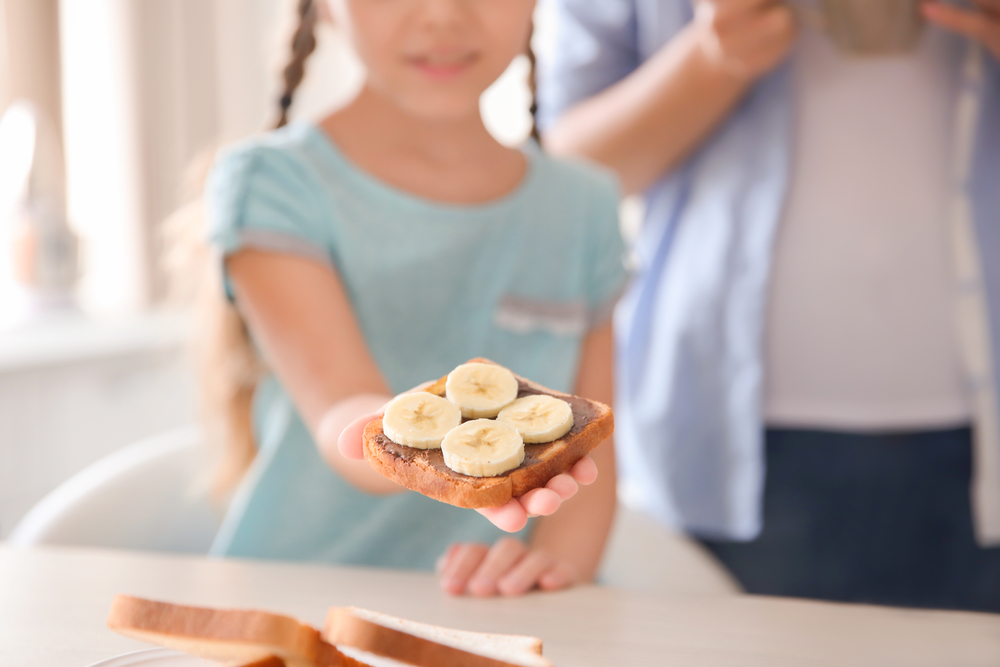
The standard dietary advice for someone with diarrhea is to follow something called the BRAT diet. Perhaps you’re familiar with the BRAT diet or perhaps you’re wondering if this diet is effective, what it entails, and how you might adapt it to fit your specialty diet. So, let’s dig in.
What is the BRAT Diet, Exactly?
BRAT stands for bananas, rice, applesauce, and toast. It’s thought to be effective because these are all bland foods that are easy to digest and may help settle your stomach during and after a bout of diarrhea or a stomach illness. While it’s true that these foods are safe choices, there are many other foods that work just as well for managing symptoms of diarrhea.
Does it Work?
The main mechanism behind the BRAT diet is that the foods are bland, easy to digest and therefore, easy on your stomach. And yes, bananas, rice, (unsweetened) applesauce, and toast certainly meet these requirements. However, there are many other bland foods you can eat during a bout of diarrhea, some of which provide more nutrient contents than those included in the traditional BRAT diet.
4 Ways to Improve the BRAT Diet
While the BRAT diet is based on sound principles, there are some additional dietary tips you can follow to help support your body during a bout of diarrhea.
- Make sure you choose unsweetened applesauce. Some sweeteners are difficult to digest and can worsen the symptoms of diarrhea.
- Incorporate homemade broth, which is an excellent source of nutrients and helps you stay properly hydrated. You can sip the broth by itself or use it as the base for a simple soup with well-cooked vegetables.
- Make sure you drink plenty of water and consider unsweetened coconut water to help replenish lost electrolytes. If you’re experiencing nausea and vomiting, try to take small sips of coconut and regular water every 10-15 minutes.
- Avoid foods that are spicy or high in fat, even healthy fats, as these foods are harder to digest. Animal proteins also fall into the hard-to-digest category, along with high-fiber foods like raw veggies. It’s also best to avoid foods or drinks high in sugar as these can potentially worsen diarrhea.
Specialty Diet Alternatives
These days, many people adhere to a diet that doesn’t allow them to follow the BRAT model. Whether you follow a Keto diet or are gluten-free, we’ve put together a list of effective BRAT diet alternatives for common diet models.
Keto: Keto is all about nutrient density, but it’s also all about high fat, which can prove difficult when you have diarrhea. If you’re on a keto diet and are experiencing diarrhea, choose a homemade bone or veggie broth for lots micronutrients and digestible protein. It’s best to avoid keto or paleo breads, as these tend to be pretty high in fat and fiber.
Carnivore: The carnivore diet is an eating model that (you guessed it) focuses on eating only meat. This can be challenging with diarrhea, so you will also likely do best with a bone broth or other easy-to-digest soups or stews. And make sure to keep yourself well hydrated with water and coconut water.
Gluten Free: Lucky for gluten free eaters, three out of four BRAT foods are naturally gluten free, and most gluten free breads are made with white flour versus whole grain, which is easier to digest. When you can, try to avoid highly processed gluten free breads made with refined flour.
Vegan: Similarly, all BRAT foods are vegan, so no worries there. However, you may want to consider some of the above options to make the BRAT diet more nutrient dense, especially since, as a vegan, you need to ensure your protein and nutrient needs are always being met.
Along with a modified BRAT diet, keep DiaResQ on-hand to help relieve diarrhea quickly and safely. DiaResQ is a food for special dietary use that provides nutrients and immune factors that work with your body to rapidly restore normal intestinal function and relieve diarrhea. And of course, nothing replaces good old fashioned rest and relaxation.

